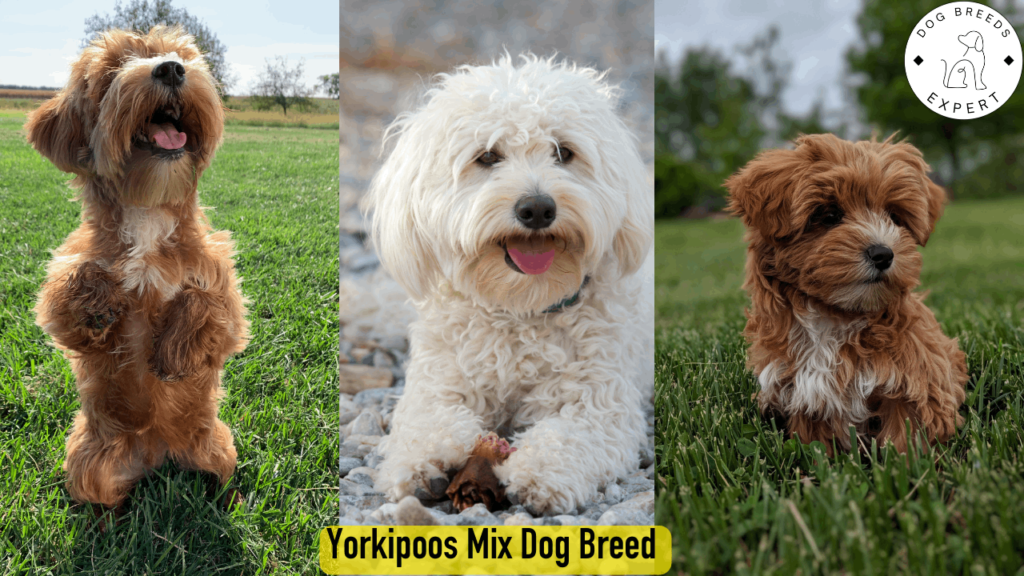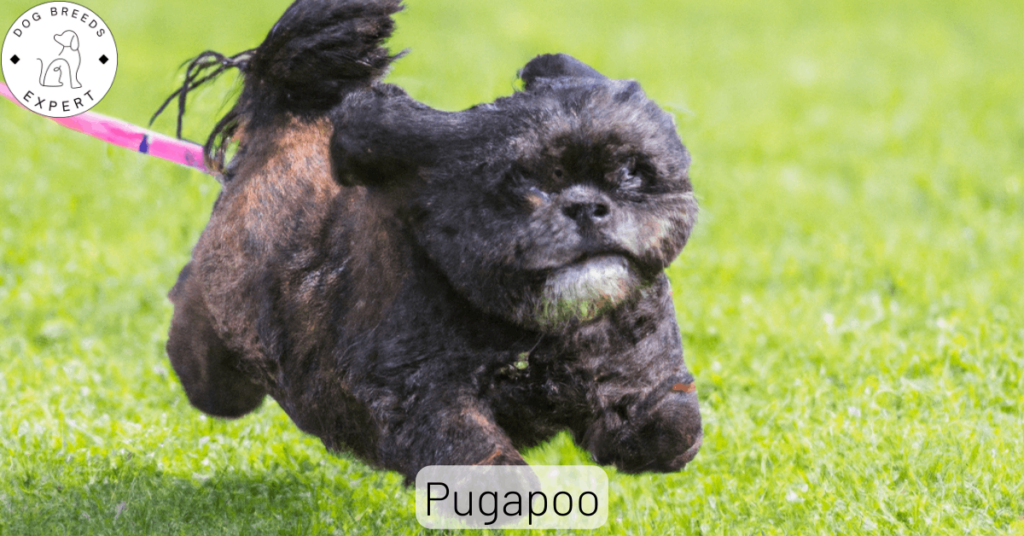The Schnoodle hybrid breed is a cross between a Schnauzer and a Poodle. They have quickly become a favorite among dog owners due to their charming personalities, hypoallergenic coats, affectionate nature, and adaptability to different lifestyles.
| Parent Breed | Schnauzer and Poodle |
| First Cross Date | 1980s |
| Average Height | 10-30 inches |
| Average Weight | 11- 34 kg (20-75 lbs) |
| Life Span | 10-15 Years |
| Colors | Solid, bi, Parti-color |
| Popular Names | Schnoodle, Miniature Schnauzer Poodle Mix |
| Temperament | Friendly, Caring, Easy to train, Prone to Anxiety |
| Coat Texture | Soft and curly or wiry |
| Temperature Tolerance | Hot weather Tolleratent |
| Sheading Nature | Year-round |
| Energy Level | High |
| Social/Attention Needs | High |
| Grooming frequency | Weekly or Monthly |
Whether you’re a first-time dog owner and plan to adopt or buy a new Schnoodle puppy or are a seasoned pet parent, the Schnoodle is sure to capture your heart.
In this blog post, we have discussed the unique characteristics of the Schnoodle, from their appearance to their temperament, to help you decide if this breed is the right fit for you and your family.
So, read more and discover all there is to know about Schnoodles.
Parent Breeds History
1)Schnauzer

The Schnauzer is a beloved breed of dog that has been a popular choice among pet owners for many years. Originally bred in Germany from the 14th to 16th centuries. Before 1879 it was known by the name Wire-Haired Pinscher.
These dogs come in three sizes: miniature, standard, and giant schnauzer.
This breed of canine is Known for its distinctive eyebrows and beard. Schnauzers are intelligent, loyal, and energetic companions. They make great family pets due to their friendly nature and are well-suited for various living situations.
Key Characteristics
- Affectionate With Family
- Good With Young Children
- Good With Other Dogs
- Low Shedding
- Playful
- Protective
- Easy To Train
2) Poodle
The Poodle has a rich history that dates back centuries, making it one of the oldest breeds. Originally bred in Germany as a water retriever, the Poodle’s intelligence and athleticism made it a popular choice among European nobility in the 16th and 17th centuries.

However, its existence was confirmed by historians long ago, in the 1400s. In the 1400s, German artist Albrecht Dürer’s painting revealed the same breed.
The Poodles parent breed has three main variants; Standard poodle, Miniature poodle, and Toy poodle.
Despite its aristocratic roots, the Poodle has since become a beloved family pet and excels in various roles, from therapy dogs to show dogs.
Known for their distinctive curly coat and elegant appearance, Poodles are also recognized for their hypoallergenic qualities, making them an excellent choice for people with allergies.
Key Characteristics
- Easy to Train
- Low Shedding
- Energetic
- Weather Tolerant
- Active
Schnoodle History
The Schnoodle hybrid dog is a relatively new designer dog breed that is a cross between a purebred breed of Schnauzer and a Poodle. Schnoodle hybrid dogs were developed in Germany in the 1980s, when other mixed dogs breed, including Sheepadoodle and Aussiedoodle, gained popularity.
Like most designer dog breeds, the Schnoodle was created to combine the best traits of its parent breeds. The Schnauzer is known for its loyalty and protective nature, while the Poodle is known for its intelligence and hypoallergenic coat.
Vital Stats
- Average Weight: 11- 34 kg (20-75 lbs)
- Average Height: 10-30 inches
- Average Lifespan: 10-15 Years
- Dog Breed Group: Hybrid
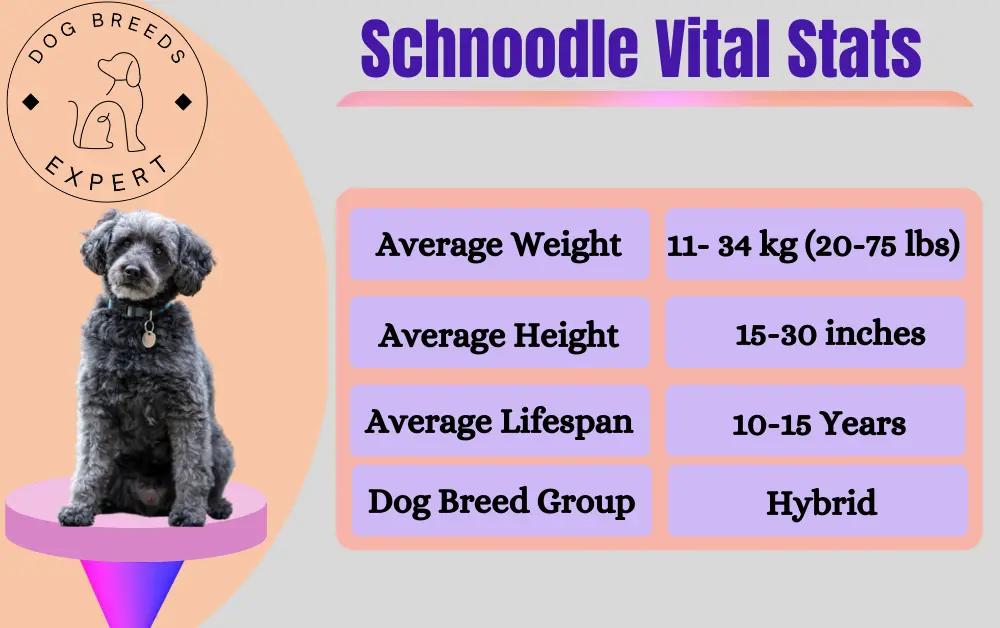
Schnoodle Traits – Pros & Cons
As with any breed, Schnoodles have their unique traits and characteristics.
Below are the pros and cons of Schnoodle:
Pros
- Hypoallergenic: Schnoodles have a hypoallergenic coat, which means they shed very little and are a good choice for people with allergies.
- Intelligence: The parent breeds of this hybrid pet, Schnauzers and Poodles, are intelligent, and Schnoodles inherit this trait. They are easy to train and can excel at various dog sports and activities.
- Affectionate: These hybrid dogs are known for their affectionate and loyal nature. They make great companion pets and are good with children and other pets.
- Adapts well: Schnoodles are a small to medium-sized breed that can adapt well to apartment living as long as they get enough exercise and mental stimulation.
- Suitable for novice owners: Schnoodles are easy to train and have a friendly and affectionate nature, making them a good choice for first-time dog owners.
- Easy to train: This mix dog breed is intelligent and eager to please, which makes them easy to train.
- Tolerates hot weather: Schnoodles have a high tolerance for hot weather, making them a good choice for warm climates.
- Affectionate with family: Schnoodles are known for being affectionate and loyal to their family members.
- Friendly toward strangers: They have a friendly and outgoing nature, which makes them good with strangers and a poor choice for a watchdog.
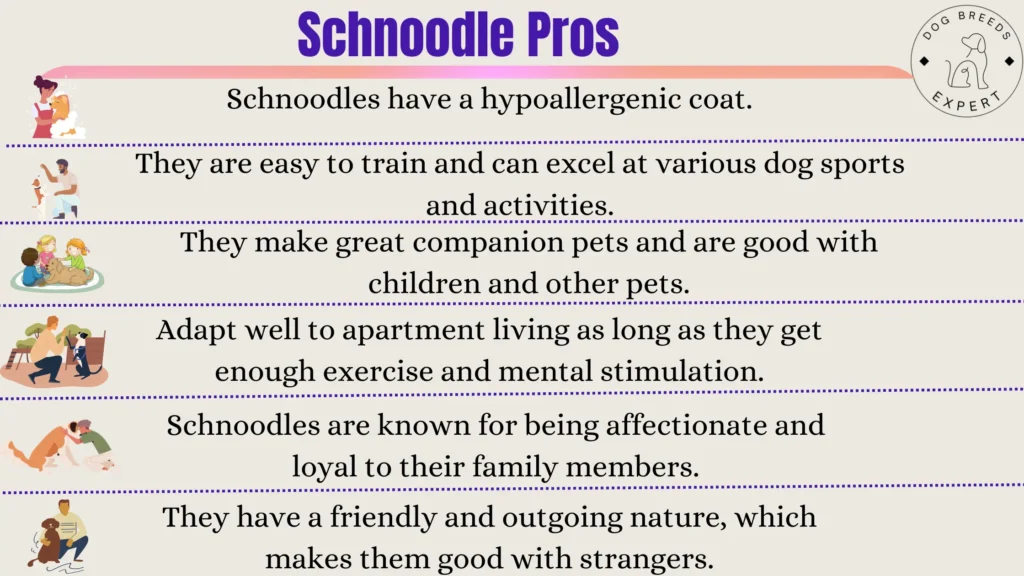
Cons
- Health problems: Like all designer dog breeds, Schnoodles can inherit health problems from their parent breeds. Prospective owners should do their research and choose a reputable breeder who conducts health screenings on their breeding dogs.
- Separation anxiety: Schnoodles are prone to separation anxiety and can become destructive if left alone for long periods of time.
- Barking: They are alert dogs and can be prone to excessive barking. Early training can help curb this behavior.
- High energy: They are a high-energy breed and require daily exercise and mental stimulation. They are not a good choice for people who lead a sedentary or busy lifestyle.
- Not tolerating cold weather well: While Schnoodles have a high tolerance for hot weather, they do not do well in cold weather and may require extra protection and warmth during winter.
- Amount of shedding: While these cute canines are hypoallergenic and shed very little, they still require regular grooming to prevent matting and tangling of their curly coat.

Health Requirements
1) Regular Veterinary Check-ups
Schnoodles should have regular veterinary check-ups at least once a year to ensure they are healthy and to prevent any uncertain complications. During these check-ups, the veterinarian will perform a physical exam and may recommend blood tests or other diagnostic tests as needed.
2) Hip Dysplasia Testing
Schnoodles are prone to hip dysplasia, a genetic condition that affects the hip joints and can lead to arthritis and mobility problems. To screen for hip dysplasia, reputable breeders will conduct hip testing on their breeding dogs.
Potential owners should ask for proof of hip testing before purchasing a Schnoodle.
3) Core Vaccination
Every pet owner must keep their pet updated with their core vaccinations.
4) Dental Care
Mix dog breeds are prone to dental issues such as periodontal disease, which can lead to tooth loss and other health issues. Daily teeth brushing and regular dental cleanings from a veterinarian can help prevent dental issues and keep your Schnoodle’s teeth healthy.
5) Balanced Diet
Schnoodles require a balanced diet to maintain overall health and prevent obesity. Owners should choose a high-quality dog food that meets their Schnoodle’s nutritional needs and avoid feeding table scraps or toxic human food, which can lead to weight gain and other health issues.
6) Regular Exercise
Schnoodles have a playful and energetic personality and require regular exercise to maintain their physical and mental health.
Daily walks, playtime in the backyard, and participation in dog sports such as agility or flyball can provide the exercise and mental stimulation that Schnoodles need.
7) Allergy Monitoring
Most mixed dog breeds are prone to allergies, manifesting as skin irritation, itching, and other symptoms. Owners should monitor their Schnoodle for signs of allergies and work with their veterinarian to identify and avoid potential allergens, such as certain foods or environmental factors.
Food Requirements
1) High-Quality Dog Food
Schnoodles require high-quality food that meets their nutritional needs. Look for dog food that has high-quality protein sources, such as chicken or fish, and avoid dog food that contains fillers, artificial preservatives, or by-products.
2) Appropriate portion sizes
It is essential to feed your canine friend appropriate portion sizes to prevent obesity. Follow the feeding guidelines on the dog food package or consult with a veterinarian to determine the appropriate portion sizes for your Schnoodle.
3) Consistent Feeding Schedule
Establish a consistent feeding schedule for your Schnoodles puppy to help regulate digestion and prevent overeating. Most adult Schnoodles require two meals per day.
4) Treats
Schnoodle puppies love treats, but limiting their intake and choosing healthy options is essential. Look for low-calorie treats specifically designed for dogs.
5) Freshwater
Always provide your Schnoodle with fresh, clean water to help them stay hydrated.
6) Dietary Restrictions
Schnoodles may have dietary restrictions based on age, health, or other factors. Consult a veterinarian for questions or concerns about your Schnoodle’s diet.
Grooming Requirements
- Regular Brushing: Schnoodles have a thick, curly coat that requires regular brushing to prevent matting and tangling. Brush you rpet’s coat at least once a week with a slicker brush or comb to keep it healthy and shiny.
- Regular Bathing: They require regular bathing to keep their coat clean and healthy. Bathe your Schnoodle every 4-6 weeks using a gentle dog shampoo designed explicitly for their coat type.
- Trimming and Clipping: Your hybrid dog pet require regular trimming and clipping to maintain their coat’s shape and prevent matting. Trim their coat around their eyes, ears, and paw pads to prevent irritation and infection.
- Nail Trimming: Schnoodles’ nails should be trimmed regularly to prevent overgrowth, which can lead to discomfort and mobility issues. Trim your canine friend nails every 2-3 weeks or as needed.
- Ear Cleaning: To prevent ear infections, Schnoodles’ ears should be cleaned regularly. Clean your Schnoodle puppy ears once a week using a gentle ear-cleaning solution and cotton balls or pads.
- Dental Care: Schnoodles are prone to dental issues. Focus on your pet’s teeth brushing and regular dental cleanings to prevent dental issues.
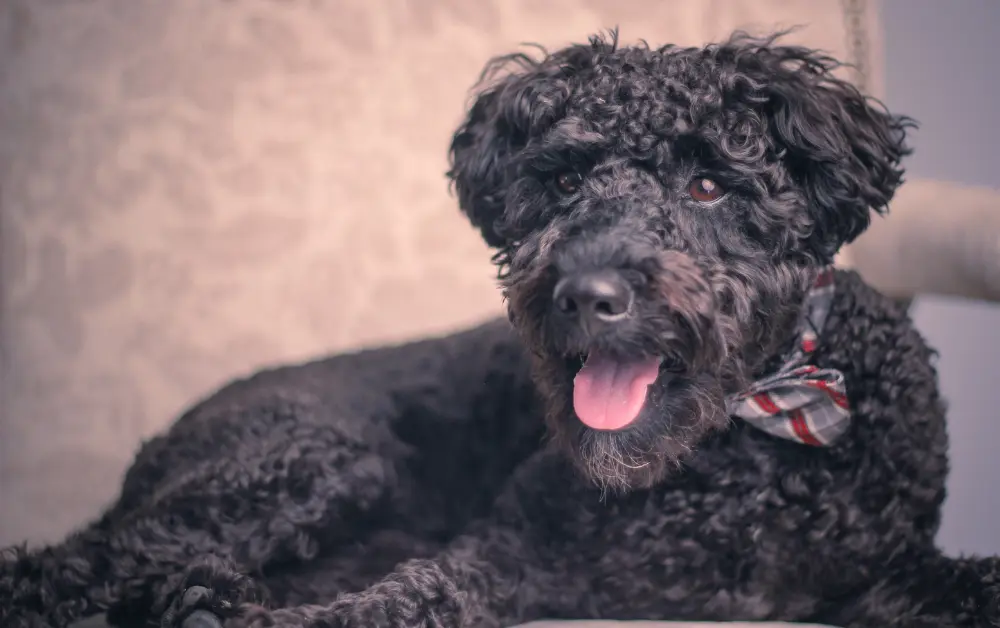
Training Requirements
1) Early Socialization
Schnoodles should be socialized at a young age to help them develop positive relationships with other dogs and people.
Introduce your Schnoodle to various people, dogs, and situations to help them become well-adjusted and confident.
2) Basic Obedience Training
This hybrid dog breed is intelligent and eager to please, making them relatively easy to train. Teach your Schnoodle basic obedience commands such as sit, stay, and come, and reward them with treats and praise for good behavior.
3) Positive Reinforcement
Schnoodles mix dog breed respond well to positive reinforcement training methods, which involve good rewarding behavior with treats, praise, or play. Avoid punishment or negative reinforcement, which can damage your pet’s trust and confidence.
4) Crate Training
Crate training can help your Schnoodle hybrid pet feel safe and secure when you are away from home or at night. Introduce your canine to the crate gradually and make it a positive experience by offering treats and toys.
5) Potty Training
Potty training is integral to training your Schnoodle and requires patience and consistency. Establish a regular schedule for potty breaks, reward your Schnoodle for going outside, and avoid punishing accidents.
6) Advanced Training
Schnoodles excel in advanced training such as agility, obedience competitions, and therapy work. Consider enrolling your Schnoodle in advanced training classes to keep them mentally stimulated and well-behaved.
Rest Requirements
- Schnoodles require around 12-14 hours of sleep rest daily, depending on their age and activity level. Provide your Schnoodle with a comfortable and cozy bed to ensure they get enough rest.
- While this mix dog breed need regular exercise, balancing it with rest and recovery is essential. Avoid over-exercising your Schnoodle, which can lead to fatigue, injury, or other health issues.
- Schnoodles pets benefit from daily relaxation time, including cuddling, grooming, or hanging out with their family. Ensure your Schnoodle has plenty of opportunities to relax and recharge throughout the day.
Coat Color
Schnoodles are available in different coat colors, including:
- Solid Colors: Black, Gray, Silver, Brown, White, Apricot, Sable
- Bi Colors: Black and white Black and Tan
Schnoodle Temperament And Personality
- Friendly, affectionate, and loyal temperament.
- Highly trainable and eager to please their owners.
- Adaptable and thrive in different living environments.
- Great with families and children.
- Tend to form strong bonds with their owners.
- Prone to separation anxiety.
- Require mental stimulation and regular exercise.
How big do Schnoodles get?
Schnoodles can vary in size depending on the size of their Schnauzer and Poodle parent breeds. Generally, they are considered a medium-sized breed and can range from 10 to 30 inches in height at the shoulder and weigh between11- 34 kg (20-75 lbs).
- Toy Schnoodles are typically smaller, weighing between 10 and 12 pounds and standing between 8 and 10 inches.
- Miniature Schnoodles weigh between 10 and 20 pounds and stand between 11 and 14 inches tall at the shoulder.
- Standard Schnoodles can weigh up to 75 pounds and stand up to 30 inches tall at the shoulder.
The size of a Schnoodle can be unpredictable as various factors, including genetics, diet, and exercise, can influence it.
Schnoodle Common Health Issues
- Schnoodles can get PRA which is a genetic condition that causes the progressive degeneration of the retina, leading to vision loss and eventual blindness.
- Cataracts are a common eye condition that can affect Schnoodles, causing cloudiness or opacity in the lens of the eye, which can lead to vision loss if left untreated.
- Legg-Calve-Perthes Disease can affect Schnoodles in which the blood supply to the head of the femur is disrupted, causing the bone to deteriorate and leading to lameness and pain.
- Schnoodles can suffer from Patellar luxation when the kneecap dislocates or moves out of its normal position, causing pain and difficulty walking.
- Like other mixed dog breeds, Schnoodles can also catch Epilepsy, a neurological disorder that can cause seizures, convulsions, and loss of consciousness.
- Hybrid dogs are more prone to Diabetes Mellitus when the body cannot regulate blood sugar levels, causing excessive thirst, urination, and weight loss.
- Addison’s disease is common in mixed-breed dogs. Addison’s disease is a hormonal disorder that affects the adrenal glands, leading to various symptoms, including fatigue, weakness, and weight loss.
Regular veterinary check-ups, a healthy diet, and proper exercise can help reduce the risk of these health issues in Schnoodles. It’s essential to work closely with your veterinarian to ensure your pet receives appropriate care and treatment for any health issues that may arise.
Schnoodle Mix Breed Dog Pictures
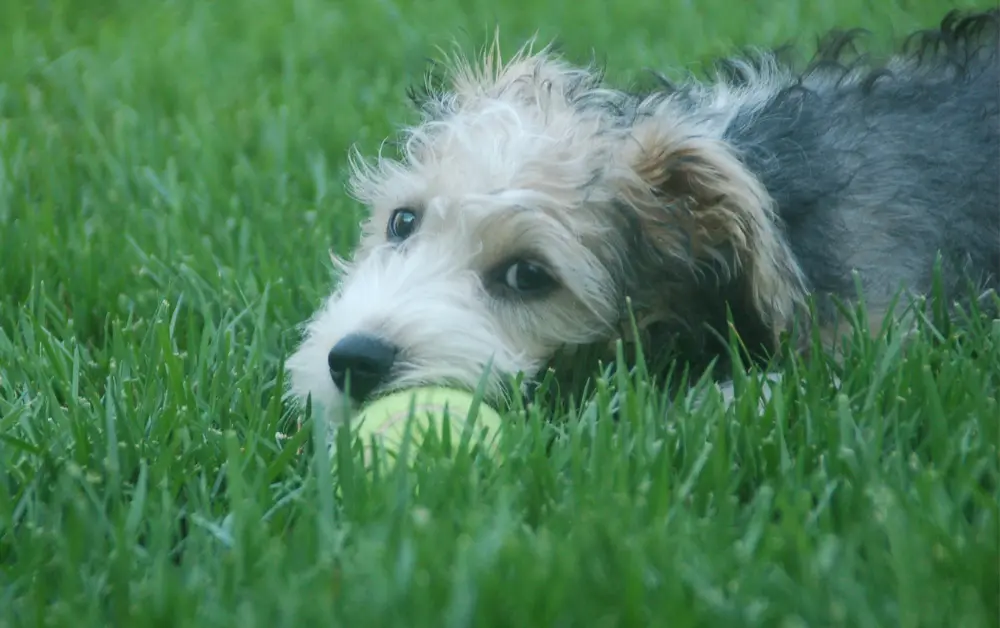



FAQs
Schnoodles are often considered to be hypoallergenic due to their low-shedding, curly coat that produces less dander than other breeds. However, it’s important to note that no dog breed is completely hypoallergenic, as allergens can come from sources besides shedding furs, such as saliva and urine. Some people with allergies may still react to Schnoodles, while others may be able to tolerate them well.
Yes, Schnoodles can make excellent pets for the right owner. They are known for their friendly and affectionate personalities, making them great companions for families with children or other pets. Schnoodles are also highly adaptable and can thrive in various living situations, including apartments or homes with large yards.
Schnoodles are not known to be excessive barkers. However, like any dog, they may bark in certain situations, such as when they are trying to alert their owners to something or when they feel threatened. With proper training and socialization, Schnoodles can learn when barking is appropriate and when it’s not.
Schnoodles are considered high maintenance due to their grooming and exercise needs. They have a thick, curly coat that requires regular brushing and professional grooming every 6-8 weeks to prevent matting and tangling.
While every dog is different, Schnoodles can be prone to separation anxiety and may not do well when left alone for long periods. They thrive on human companionship and can become destructive or develop behavior issues if left alone for extended periods. Schnoodle owners need to provide plenty of mental and physical stimulation and proper training and socialization to help prevent separation anxiety.


